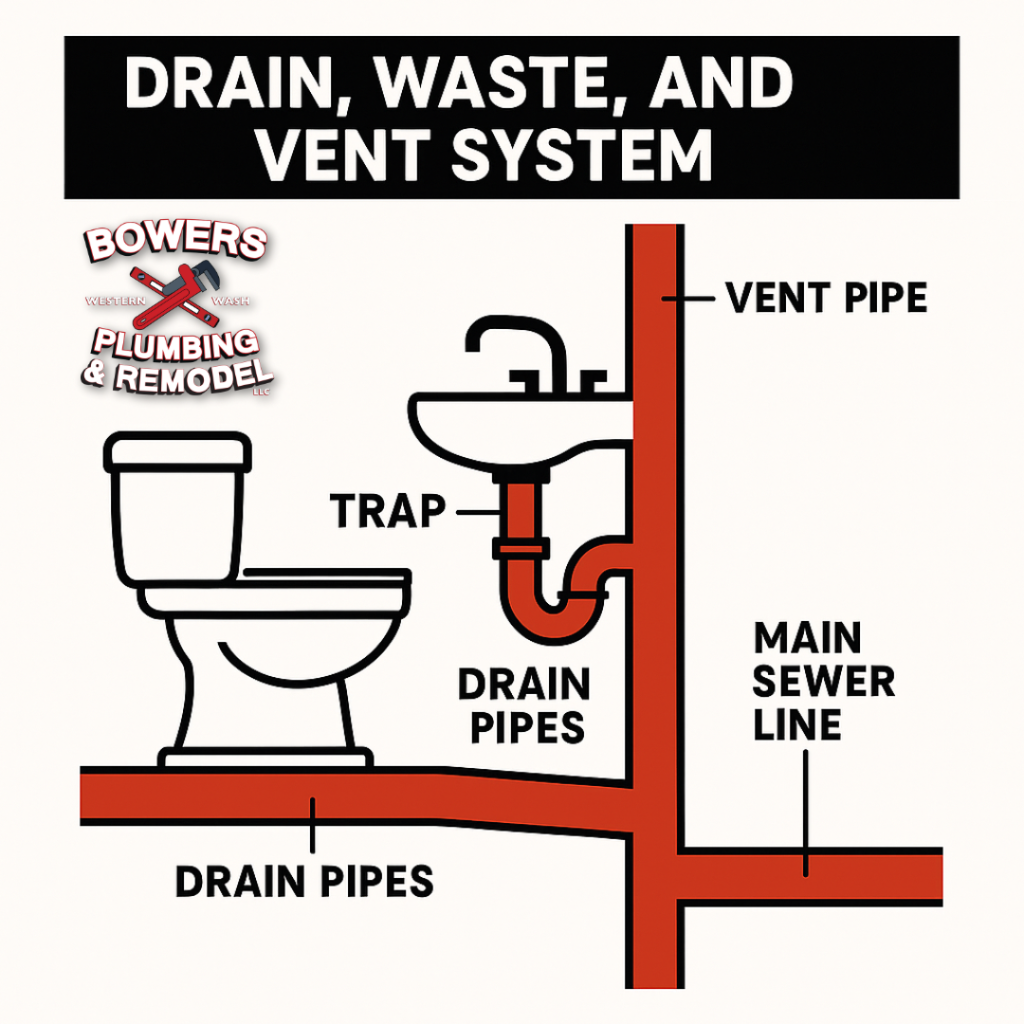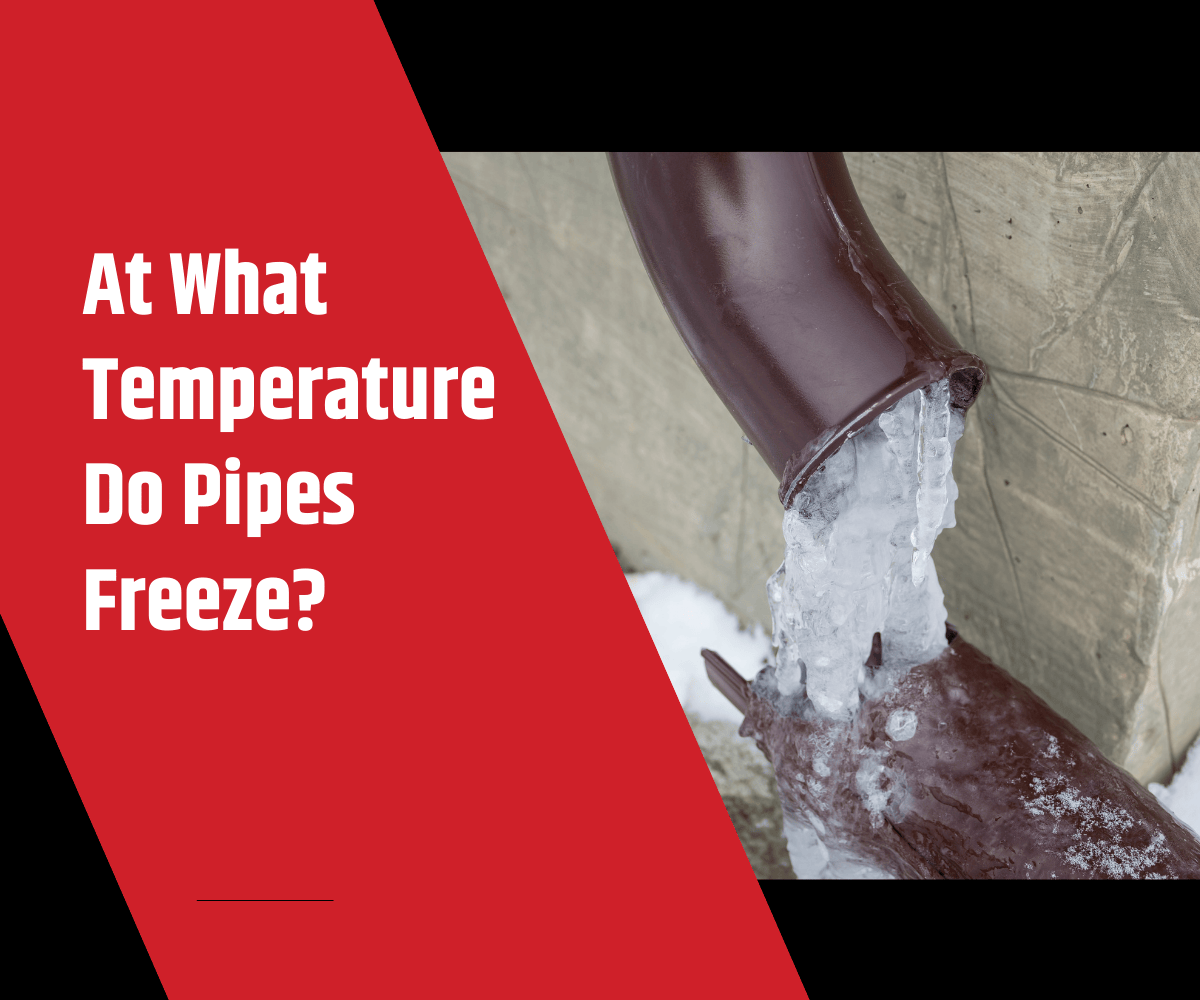What Does DWV Stand for in Plumbing?
If you’ve ever had plumbing work done or spoken with a plumber, you may have heard the term DWV; but what exactly does DWV mean, and why is it crucial for your plumbing system? DWV stands for Drain, Waste, and Vent—a core part of the infrastructure that ensures the safe removal of wastewater and the proper ventilation of your plumbing system.
In this blog, we’ll dive deep into each component of DWV, explaining how it works, its importance, and what happens if things go wrong. Whether you’re a homeowner looking to understand your plumbing better or someone facing specific plumbing issues, knowing the basics of DWV can help you make informed decisions.
Understanding the Components of DWV
Drain: The Path for Wastewater
The drain system is the part of the DWV network that most people are familiar with. This system is responsible for carrying used water away from your home’s fixtures, like sinks, bathtubs, dishwashers, and washing machines. It operates on gravity—meaning that when you turn on your faucet or flush the toilet, gravity helps pull the water down through the pipes and into your home’s drainage system.
These pipes, usually made from PVC, ABS, or cast iron, are designed to direct the wastewater either into your city’s sewage system or, in more rural areas, into a septic tank. Without a properly functioning drain system, you could experience slow-draining sinks, water backups, or even potential water damage.
It’s important to note that each fixture in your home—whether it’s a kitchen sink or a toilet—requires its own drain pipe, which connects to the larger system. If one drain becomes clogged, it can lead to problems across the whole network, making it critical to keep your drains clear and functioning.

Waste: Disposing of Solid and Liquid Waste
The waste portion of the DWV system deals with something even more important—disposing of human waste from your toilets and any other solid debris from fixtures like garbage disposals. Waste pipes are generally larger than the typical drain pipes because they must carry both liquid and solid waste efficiently.
Toilets, for example, require a waste pipe that’s large enough to handle solids as well as liquids without clogging or causing backups. Waste pipes work similarly to drain pipes in that they rely on gravity to move the waste downward and out of your home. Without properly installed waste pipes, blockages could occur, which might result in raw sewage backing up into your home—a nightmare scenario no homeowner wants to deal with.
Another essential aspect of waste pipes is that they are typically installed with cleanouts—places where a plumber can access the pipes if there’s a blockage. These cleanouts are critical because they provide an entry point to deal with clogs and other problems without tearing apart your walls or floors.
Vent: Allowing Airflow and Preventing Sewer Gases
Perhaps the least understood component of the DWV system is the vent system. It doesn’t carry water or waste but is just as vital to the functionality of your plumbing. The vent system is designed to allow air to enter the plumbing pipes. This airflow is crucial because it prevents the creation of negative pressure in your pipes, which could otherwise cause water to siphon out of your traps and lead to slow drainage or blockages.
Additionally, vent pipes serve another important purpose: they allow harmful sewer gases to escape. When waste breaks down in your pipes, it produces gases like methane and hydrogen sulfide, which need to be vented out of the system. Vent pipes are typically routed through your roof, where these gases can safely dissipate into the atmosphere. If your plumbing system lacks proper ventilation, you might notice foul odors or even experience health hazards.
How Does the DWV System Work?
The DWV system works by creating a balance between drainage and ventilation. As water flows down through the drain pipes, air flows in through the vent pipes. The pressure created by the moving water helps push waste along the pipes, while the air from the vent system ensures smooth flow and prevents siphoning or blockages.
Proper installation of a DWV system is essential for your home to function correctly. If any part of this system is faulty—such as a blocked drain, an improperly sized waste pipe, or a poorly designed vent—you’ll likely encounter a range of issues, from minor inconveniences like slow drains to more significant problems like sewage backups or strong odors.
The Importance of a Well-Functioning DWV System
A well-functioning DWV system is critical for several reasons:
- Prevents Blockages: The vent system allows air to flow into the pipes, preventing the creation of negative pressure that can lead to clogs and slow drainage.
- Maintains Water Flow: The drain and waste parts of the system ensure that wastewater and solids are removed from your home without causing backups or damage.
- Health and Safety: By venting harmful gases outside your home, the DWV system keeps your environment safe and free from potentially dangerous sewer gases like methane and hydrogen sulfide.
- Long-Term Durability: A properly installed DWV system can last for decades with minimal maintenance, making it a vital part of your home’s long-term infrastructure.
Signs You May Have DWV Issues
If you’re experiencing any of the following signs, it may indicate a problem with your DWV system:
- Slow-draining sinks or toilets
- Gurgling sounds from drains
- Persistent sewer odors
- Frequent clogs or backups
- Water pooling around floor drains
At Bowers Plumbing & Remodel, we understand the complexity of DWV systems and the importance of keeping them functioning properly. Whether you’re dealing with slow drains, strange odors, or frequent clogs, our team of expert plumbers is ready to help. We specialize in diagnosing and repairing DWV systems to ensure your home’s plumbing operates smoothly and safely.
When you choose us, you’re not just getting a quick fix. We offer comprehensive solutions, from minor repairs to full system inspections and installations. Our experienced plumbers will:
- Perform a thorough system evaluation: We inspect your entire DWV system to identify any blockages, leaks, or malfunctions, ensuring we catch any small issues before they become big problems.
- Provide expert advice: After evaluating your system, we’ll walk you through the issues and explain your options. Whether you need simple repairs or a more extensive overhaul, we’ll provide you with the information needed to make an informed decision.
- Use top-quality materials and equipment: At Bowers Plumbing & Remodel, we believe in doing things right the first time. That’s why we only use high-quality materials and the latest tools to ensure long-lasting solutions.
- Offer competitive pricing: We understand that plumbing repairs can be an unexpected expense, which is why we strive to offer fair and competitive pricing without compromising on quality or service.
Don’t wait for a minor DWV issue to turn into a major problem. A small blockage or vent malfunction can quickly escalate into more costly repairs if not addressed promptly. If you suspect something is wrong with your plumbing system, or if you’re simply looking for peace of mind with a system inspection, we’re here to help.
Contact Bowers Plumbing & Remodel today to schedule your DWV system inspection or repair. We take pride in serving homeowners in Puyallup, WA, and the surrounding areas, offering reliable, expert plumbing services that you can trust. Let us help you keep your home’s plumbing in top condition, ensuring safe and effective drainage, waste management, and ventilation for years to come!




